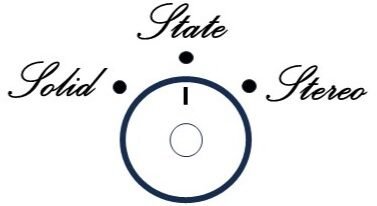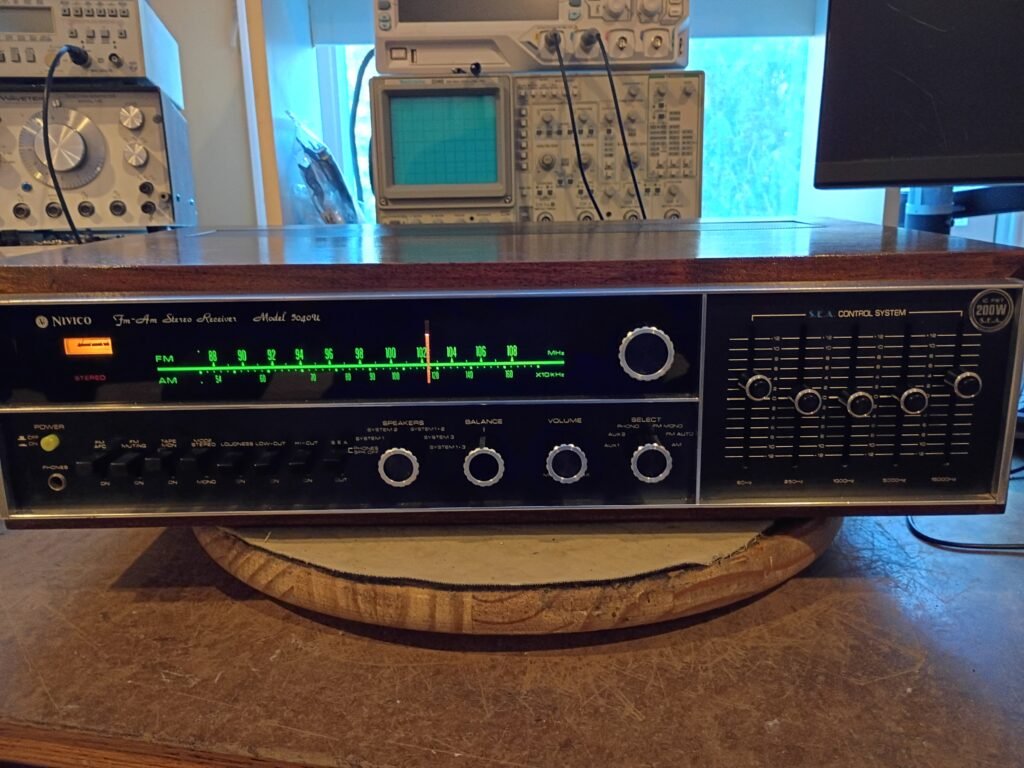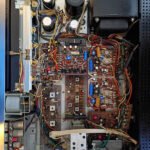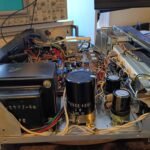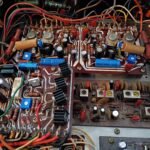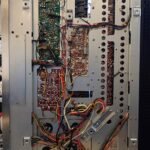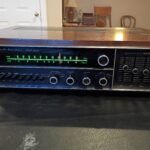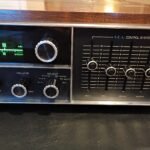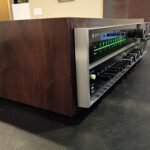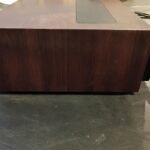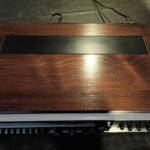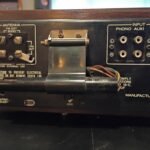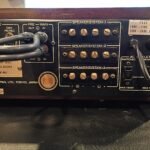Restoration notes
Beyond the list of standard restoration steps detailed on the main page, here are some added notes for this unit :
I acquired this late 60s receiver from Goodwill, so no background on any issues, etc. Exterior condition was very good.
Perhaps the most powerful cap-coupled receiver ever (?) To achieve this, the amp supply is an impressive 95V DC. While JVC was not on my normal manufacturer list, I was drawn to the styling and SAE sliders that JVC continued using on receivers for decades. These work well and provide much better tone control than having just bass and treble knobs.
Initial inspection revealed a previous servicing (likely 20 years ago or so). The shop used red wax to “seal” one of the bottom cabinet screws with a warning that breaking the seal would void any warranty (nice medieval touch). That old issue was clearly with the left amplifier circuit as the board was a bit charred, and the original output transistors were replaced with some rather old devices on that channel. I believe in matched outputs, so replaced all 4 with modern equivalent transistors.
Initial power-up showed very high ripple (500mV) on the 95V main amp supply. Installing a new capacitor (3300uf vs 2200uF original) got the ripple under 40mV. I added nice jumpers to connect the preamp outs to the main ins. The receiver then functioned well, and I was immediately impressed with the very nice sound in FM stereo mode. This receiver definitely has “character” (in the best sense).
While I often can clean up the amplifier trim pots using fader lube, these were too far gone (noisy) and were all replaced. The recap went smoothly (boards were easy to access, but the traces were rather delicate). All functions working fine and continuing to sound quite good to me.
The wood cabinet is quite well made (and heavy). The finish was scratched up so I carefully sanded back down to the original mahogany veneer, re-stained and applied multiple ploy coats to get the very clean result in the photos. As a result, I would rate the cosmetics as excellent with only a couple tiny dings along the top of the faceplate.
Bench measurements
In line with IHF standards in the late 1960s, JVC speced “continuous power” as 82.5 + 82.5 watts per channel using 4 ohm loads and 0.5% distortion at 1,000 Hz.
I always test from 20 to 20,000 Hz (mid 1970s IHF standard) and I saw
1,000 Hz : 75 watts per channel (wow)
20 – 20,000 Hz : 25 watts per channel
25W is plenty for most speakers (typical listening levels are in the 2 watt range).
I decided to use the 5040u adjustable overload circuit to cap the amplifier output at 25W to help the user avoid distortion from 20 to 20,000 Hz. If pushed beyond this (which would be extremely loud with even modestly efficient speakers), this circuit will harmlessly drop the amplifier supply voltage and turn on a red “caution” light on the front panel. Shutting down the receiver for approx 10 seconds resets this circuit and things then operate normally again. I pushed my air-suspension EPIs test speakers alarmingly hard before this circuit tripped. Anyone using Klipsch or similarly efficiency speakers go deaf well before hitting 25W 🙂
Some reference links
hifiengine : https://www.hifiengine.com/manual_library/jvc/5540.shtml
the JVC 5040 is the predecessor to the 5040u – they have much in common
Select45rpm : https://select45rpm.com/pages/hifi/vintage-hifi-reviews.html#135
scroll about half way down this very long page
